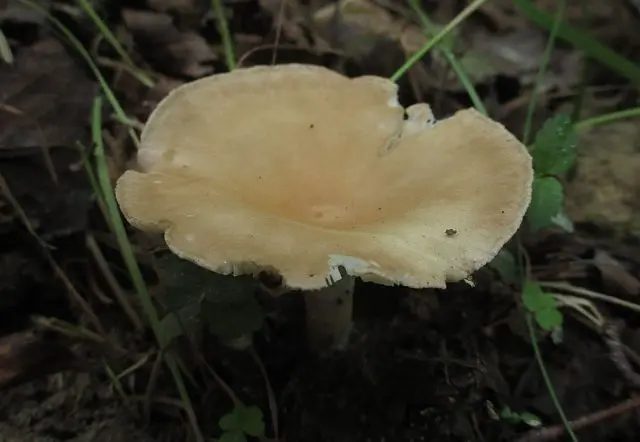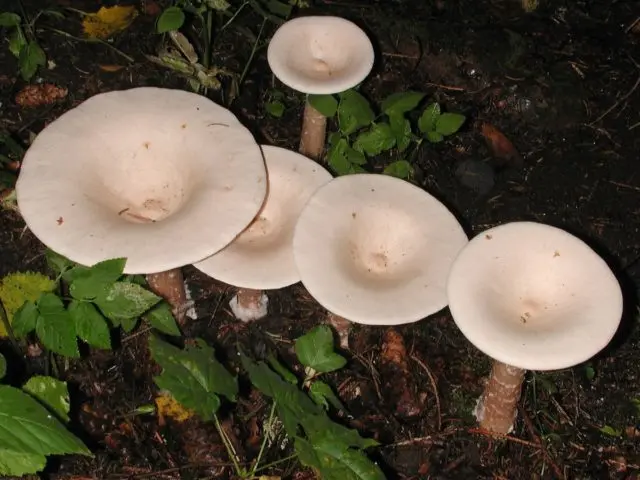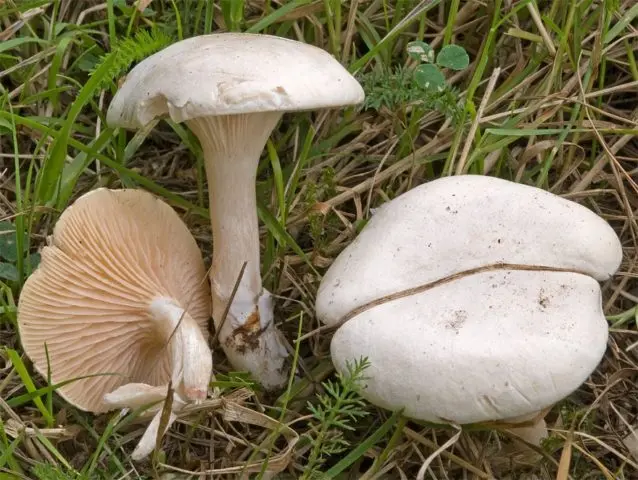Contents
The leaf-loving (waxy) talker belongs to the Tricholomovye or Ordinary family from the order Lamellar. It has several names: foliar, waxy, waxy, grayish, Latin – Clitocybe phyllophila.
Where leafy talkers grow
Waxy talkers grow in Eurasia, Great Britain and North America. Widespread in deciduous and mixed forests. They prefer to grow on a leafy cushion, because of this they got the name leafy, but they are also found on coniferous litter.
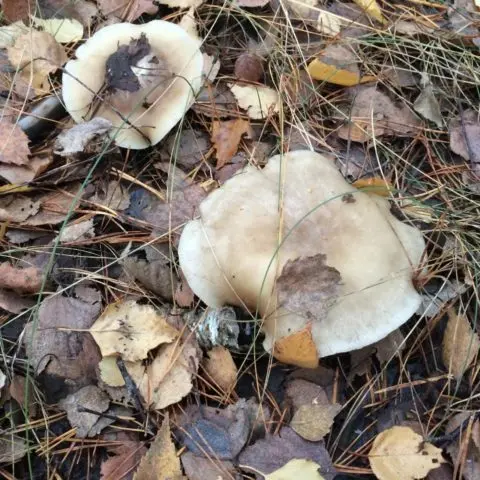
The ripening season is in the autumn months. The first fruiting bodies appear in early September (in some regions at the end of August), the latter can be found in November.
What do waxy talkers look like
According to the description, the hat in young specimens of the waxy talker (pictured) has a convex shape with a tubercle in the center, the edges are tucked inward. As it grows, it becomes flat, the bulge in the center is hardly noticeable. In old mushrooms – funnel-shaped, with a wavy edge. The plates are not visible through the hat. The surface is beige or brown, sometimes with ocher spots, covered with a waxy coating, hence the name – waxy. The cracking of this plaque gives the hat a marbling. The diameter varies between 5-10 cm.
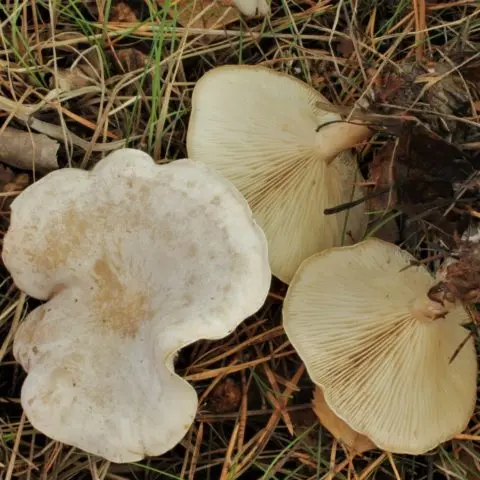
Waxy specimens have white plates that become creamy with an ocher tint with age. The width of the plates is 5 mm, the location is average in frequency.
Spore powder is dirty beige or pink-cream.
The flesh in the cap is soft, thin (up to 2 mm thick), spongy, white in color; in the stem – harsh, fibrous, pale beige.
The height of the stem is 5-8 cm, the diameter is 1-2 cm. The shape is cylindrical, expanding at the base. The color is white, as it grows older it acquires a dirty ocher hue. The upper part of the leg is covered with a frost-like coating.
Waxy talkers (leaf-loving) have a mild, astringent taste, a pleasant aroma, but not mushroomy, with strong spicy notes.
Is it possible to eat leafy talkers
Waxy talkers contain muscarine, an alkaloid that acts on cholinergic receptors. This substance is toxic to humans, so leafy talkers are not used for food.
How to distinguish waxy talkers
Leafy (waxy) talkers can be confused with the following mushrooms:
- saucer-shaped talkerrelated to conditionally edible specimens. You can distinguish it by a matte hat and descending plates under it;

- bent talker a little easier to distinguish, because the mushroom is larger than leaf-loving specimens. The species is classified as conditionally edible;

- cherry has a variety of colors of the cap, so some mushroom pickers take it for leaf-loving specimens. Distinctive features: pinkish plates, lack of concentric circles on the cap. The mushroom is edible.Important! Cherry can be identified by a cucumber or mealy smell.

Symptoms of poisoning
The first signs of poisoning may appear as early as 30-40 minutes after eating a mushroom dish, but more often this happens after a few hours.
Signs of waxy mushroom poisoning include:
- nausea, vomiting, diarrhea;
- soreness in the abdomen;
- hypersalivation (salivation);
- increased sweating;
- constriction of the pupils, blurred vision;
- changes in the functioning of the heart (bradycardia).
A particularly dangerous symptom is shortness of breath that occurs against the background of pulmonary edema. In severe cases, the patient falls into a coma. Poisoning with muscarine-containing mushrooms, including waxy (leaf-loving) talkers, can result in the death of young children, the elderly and people with problems of the cardiovascular and respiratory systems.
Regular consumption of a small amount of mushrooms with muscarine causes drug addiction.
First aid for poisoning
If you feel worse, you need to call an ambulance, and before her arrival, do a gastric lavage. Muscarine’s antidote is atropine. Its solution is administered subcutaneously or intravenously. But if it was not possible to identify the mushrooms, it is better not to use the drugs until the doctors arrive.
Washing is done with a weak solution of manganese or warm water. The victim should drink 5-6 glasses of water, after which a gag reflex occurs. Repeat several times. After that give absorbents.
With chills, the patient is covered, heating pads are applied to the stomach and limbs.
To prevent dehydration, the victim should drink a weak solution of salt in small sips (1 tsp per 1 liter of water), you can use the pharmacy Regidron.
Conclusion
The leaf-loving talker is an inedible representative of the Ryadovkovye family. It has similar conditionally edible species, so during their collection it is necessary to be extremely careful.










